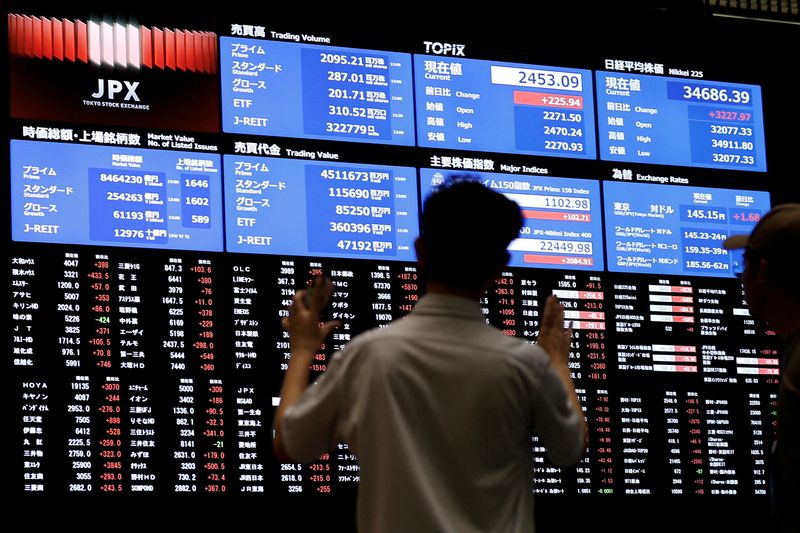World stocks tiptoe, dollar rises as investors await US data
By Yoruk Bahceli and Tom Westbrook
(Reuters) -World stocks steadied on Tuesday and the dollar rose to a two-week high as investors turned cautious awaiting a raft of economic data that may determine how deeply the U.S. will cut interest rates.
Focus was on the U.S. ISM manufacturing activity survey due at 1400 GMT, setting the scene ahead of jobs data on Friday which will be crucial for whether the Federal Reserve cuts by 25 basis points or 50 on Sept. 18 and how much it delivers for the rest of the year.
World shares were 0.1% lower, a touch below record highs. Europe's STOXX 600 was down 0.3% while U.S. stock futures were around 0.5% lower.
The U.S. dollar rose to a new two-week high against a basket of currencies.
Economists forecast the ISM survey improving but remaining in contractionary territory at 47.5 in August.
"We think market reaction to any surprise will likely be contained today given the event risk ahead of us," said Evelyne Gomez-Liechti, rates strategist at Mizuho in London.
On Friday, analysts are looking for a rise of 160,000 in U.S. non-farm payrolls (NFP) and a dip in the unemployment rate to 4.2%.
July's jobs data showed the unemployment rate jumped near a three-year high of 4.3% amid a significant slowdown in hiring. The data, along with a wind-down of yen carry trades, prompted a global markets selloff and investors have doubled the rate cuts they expect from the U.S. Federal Reserve this year.
Traders now price in around 100 basis points of Fed cuts across three meetings, meaning they foresee a big 50 bps cut at one of them.
But many investors say that is overpriced given a relatively healthy U.S. economy.
Stock markets have recovered from their early August rout, while bond markets continue to hold onto gains, painting a puzzling picture.
"It really boils down to Friday's number," said Raisah Rasid, global market strategist at J.P. Morgan Asset Management in Singapore, with policymakers looking for a cooling labour market to clear the way for rate cuts.
"We don't see any stress or indications that would necessitate a 50 basis point cut ... the question is how long will risk assets continue to rally?"
In bond markets, 10-year Treasury yields were unchanged at 3.92% as trade resumed following a U.S. holiday.
OIL TUMBLES
Caution also prevailed in energy markets, with oil prices tumbling on Tuesday.
Brent crude futures dropped over 2% to as low as $75.44 a barrell, the least since Aug. 5, the height of last month's global markets selloff.
Oil prices rose over $81 in late August as political tensions in Libya led to a halt in exports, but have struggled for traction since as demand worries, particularly in leading importer China, have weighed.
Another big mover was Japan's yen, which was last up 0.5% against the U.S. dollar to 146.130.
It broke a four-day losing streak and rose from a two-week low as media reports cited the Bank of Japan governor reiterating that the central bank would keep raising interest rates if the economy and inflation performed as policymakers currently expect.
The euro touched a fresh two-week low against the dollar around 1.1033 and was last down 0.3%.
"If NFP comes in on target, or close to it, that's probably going to lock in that 25-bps cut and I think because of that we'll probably see some more dollar appreciation," said Nick Twidale, chief market analyst at ATFX Global in Sydney.
Gold was down a touch at $2,496 an ounce after hitting a record high of $2,531 in August.
Source: Investing.com
